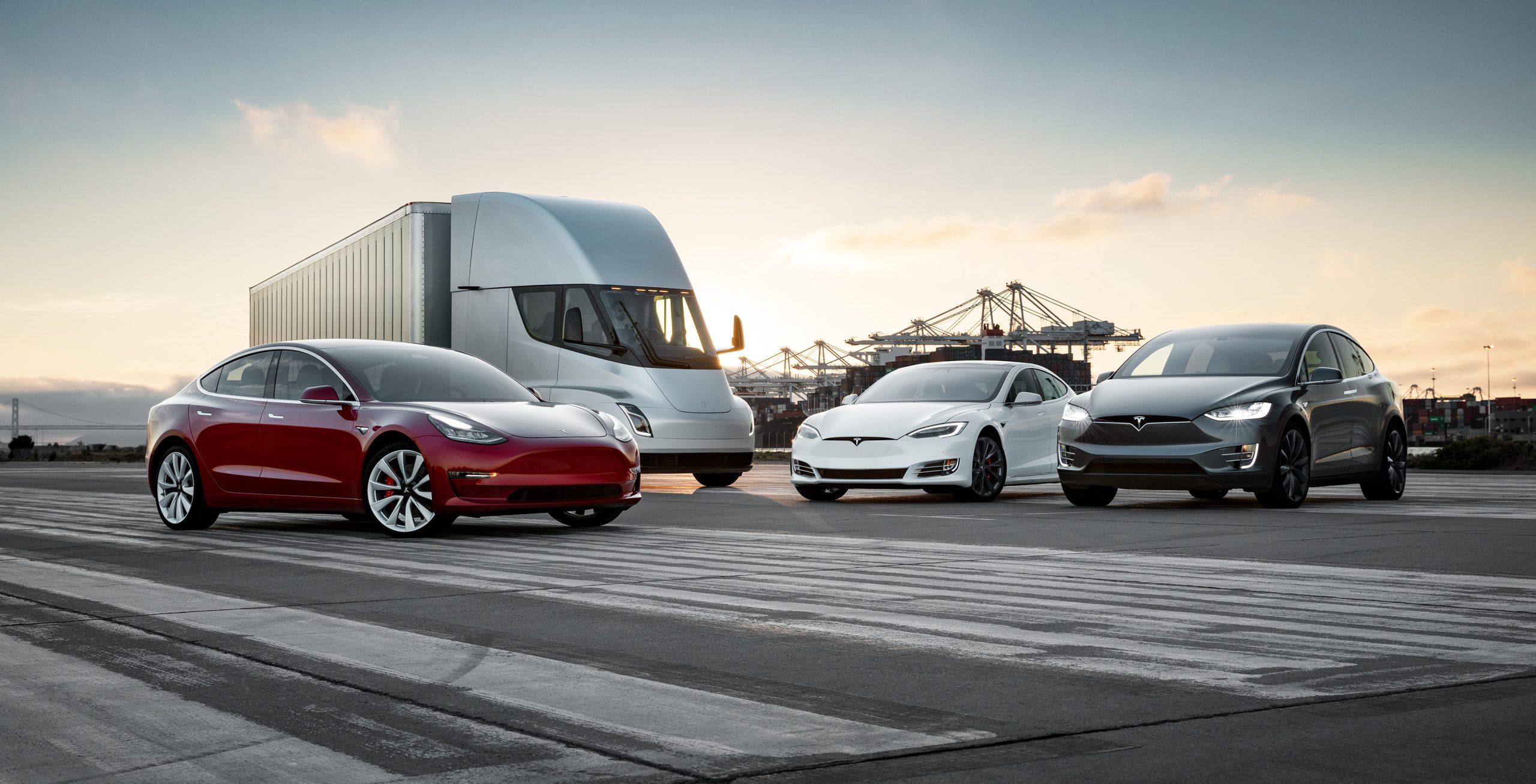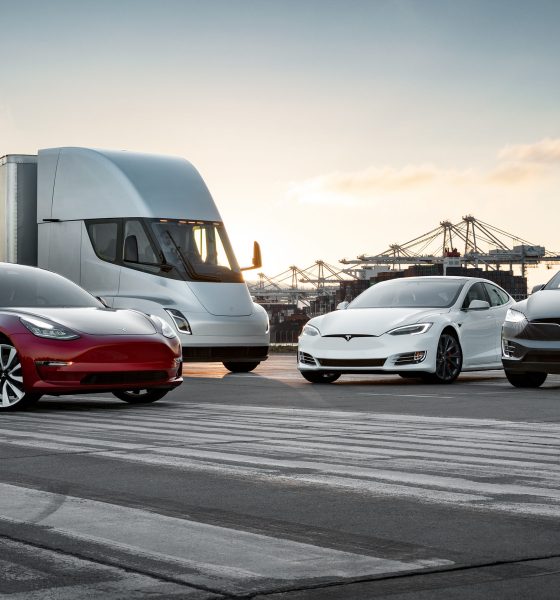Welcome to a FREE preview of our weekly exclusive! Each week our team goes ‘Beyond the News’ and handcrafts a special edition that includes our thoughts on the biggest stories, why it matters, and how it could impact the future.
You can receive this newsletter along with all of our other members-exclusive newsletters, become a premium member for just $3/month. Your support goes a long way for us behind the scenes! Thank you.
—
Overall, I’d say it has been a good week for electric vehicles.
The Porsche Taycan had more than just a moment in the spotlight, really. It kicked up all sorts of discussion about where EVs are headed and brought in some healthy debate about where things should be headed. I believe there’s an old saying that goes, “There’s no such thing as bad publicity,” which is probably debatable; however, as far as EV awareness goes, even the most skeptical takes on Porsche vs. Tesla vs. the rest arguably does more to spread consumer curiosity than the most expensive and extensive marketing campaigns.
I know the Taycan has been discussed to death at this point, but I do find it interesting what its final debut meant in the big picture. Despite everything that the $TSLAQ crowd tries to drag Tesla through the mud about, here is a luxury sports car maker with a decades-long, hard-earned reputation spending serious time and effort developing an amazing electric car. It’s not a compliance car to meet some sort of regulatory requirement. It’s not just an “option” built to prove the company is eco friendly or whatever term makes people feel warm and fuzzy about their purchase. It was built to be an EV worthy of sharing the stage with its award-winning, legendary, gas-powered brethren.
I think Elon Musk’s subsequent attentions to the Taycan added to the publicity benefits EVs were experiencing as well. Silliness aside, Tesla’s new challenge to take on the Taycan’s Nürburgring record validated what Porsche had achieved and validated Tesla’s success in spreading its message that EVs really are the future of automotive transportation. Tesla fans are no longer just cheering on the brand’s drag race wins over legacy cars. There’s a new “normal” on its way where electric is competing with electric, and the finer details about the cars will matter rather than just the source of power.
The timing of these recent events seems to be well placed in light of, say, Europe’s upcoming regulations regarding CO2 reductions for vehicles. Reading the news about various car makers’ struggles to comply with the rules and the foot dragging that’s been going on, it seems to me like there’s at least some confidence that serious efforts to make good electric cars is underway.
Personally, it took a while to understand the hubbub about EVs because of the poor efforts of car makers in the past. They sounded impractical, held very little value once purchased, and could only be driven until the batteries went bad, essentially. I mean, if it weren’t for writing about Tesla as a reporter, I would have thought any EV built to meet government regulations was going to be crud and held off as long as possible before buying one. Sometimes I wonder if European customers worry about the same thing after so many legacy car makers have come out with lackluster EVs, assuming their budget doesn’t allow for a Tesla.
The Taycan seems to give some hope that “compliance” may be out the window soon. Now that there’s another serious EV out there, everyone else risks looking…lazy? Uninterested in customer satisfaction? Innovatively challenged? With both Tesla and Porsche blowing through stereotypes, other car makers have to shelve their excuses and figure things out.
Then there’s Rivian continuing to make progress towards entering the arena as well. Most recently, the startup announced a $350 million dollar investment from Cox Automotive meant to focus on customer experience. It’s the third big investment for the company that’s working on some serious electric pickup trucks and SUVs. I know we still have yet to see their cars enter production, but the prototypes and show models are pretty impressive already. They’re yet another company putting legacy auto on notice that the compliance days are over.
Ford seems to have gotten the message with its $500 million dollar Rivian investment, so there are sprinkles of hope here and there I suppose. Perhaps Audi’s tiny-range e-tron that was recently announced will produce enough customer results to encourage production of really good EVs with a win-win balance. All customers get great cars, and car makers can find a better price point by reducing the parts that cost the most, i.e., the batteries. Just brainstorming here…
But regardless, considering the Tesla and Porsche banter and Rivian’s news this week, I’d say EVs came out with winning headlines overall. “Power” to the future? Sorry… I’m a sucker for cheesy 80s mantras.

Lifestyle
Tesla Model S Plaid battles China’s 1500 hp monster Nurburgring monster, with surprising results
There is just something about Tesla’s tuning and refinement that makes raw specs seem not as game-changing.

The Tesla Model S Plaid has been around for some time. Today, it is no longer the world’s quickest four-door electric sedan, nor is it the most powerful. As per a recent video from motoring YouTube channel Carwow, however, it seems like the Model S Plaid is still more than a match for some of its newer and more powerful rivals.
The monster from China
The Xiaomi SU7 Ultra is nothing short of a monster. Just like the Model S Plaid, it features three motors. It also has 1,548 hp and 1,770 Nm of torque. It’s All Wheel Drive and weighs a hefty 2,360 kg. The vehicle, which costs just about the equivalent of £55,000, has been recorded setting an insane 7:04.957 at the Nurburgring, surpassing the previous record held by the Porsche Taycan Turbo GT.
For all intents and purposes, the Model S Plaid looked outgunned in Carwow’s test. The Model S Plaid is no slouch with its three motors that produce 1,020 hp and 1,420 Nm of torque. It’s also a bit lighter at 2,190 kg despite its larger size. However, as the Carwow host pointed out, the Model S Plaid holds a 7:25.231 record in the Nurburgring. Compared to the Xiaomi SU7 Ultra’s record, the Model S Plaid’s lap time is notably slower.
Real-world tests
As could be seen in Carwow’s drag races, however, Tesla’s tech wizardry with the Model S Plaid is still hard to beat. The two vehicles competed in nine races, and the older Model S Plaid actually beat its newer, more powerful counterpart from China several times. At one point in the race, the Xiaomi SU7 Ultra hit its power limit due to its battery’s temperature, but the Model S Plaid was still going strong.
The Model S Plaid was first teased five years ago, in September 2020 during Tesla’s Battery Day. Since then, cars like the Lucid Air Sapphire and the Xiaomi SU7 Ultra have been released, surpassing its specs. But just like the Model Y ended up being the better all-rounder compared to the BYD Sealion 7 and the MG IM6, there is just something about Tesla’s tuning and refinement that makes raw specs seem not as game-changing.
Check out Carwow’s Model S Plaid vs Xiaomi SU7 drag race video below.
Lifestyle
500-mile test proves why Tesla Model Y still humiliates rivals in Europe
On paper, the BYD Sealion 7 and MG IM6 promised standout capabilities against the Model Y.

BYD is seeing a lot of momentum in Europe, so much so that mainstream media has taken every opportunity to argue that the Chinese automaker has beaten Tesla in the region. But while BYD sales this year in Europe are rising and Tesla’s registrations remain challenged, the raw capabilities of vehicles like the Model Y are difficult to deny.
This was highlighted in a 500-mile challenge by What Car? magazine, which showed that the new Tesla Model Y is more efficient, cheaper to run, and more reliable than rivals like the BYD Sealion 7, and even the nearly 400 KW-charging MG IM6.
Range and charging promises
On paper, the BYD Sealion 7 and MG IM6 promised standout capabilities against the Model Y. The Sealion 7 had more estimated range and the IM6 promised significantly faster charging. When faced with real-world conditions, however, it was still the Model Y that proved superior.
During the 500-mile test, the BYD nearly failed to reach a charging stop, arriving with less range than its display projected, as noted in a CarUp report. MG fared better, but its charging speeds never reached its promised nearly-400 kW charging speed. Tesla’s Model Y, by comparison, managed energy calculations precisely and arrived at each stop without issue.
Tesla leads in areas that matter
Charging times from 25% to 80% showed that the MG was the fastest at 17 minutes, while Tesla and BYD were close at 28 and 29 minutes, respectively. Overall efficiency and cost told a different story, however. The Model Y consumed 19.4 kWh per 100 km, compared to 22.2 for MG and 23.9 for BYD. Over the full trip, Tesla’s charging costs totaled just £82 thanks to its supercharger network, far below BYD’s £130 and MG’s £119.
What Car? Magazine’s testers concluded that despite BYD’s rapid sales growth and the MG IM6’s seriously impressive charging speeds, Tesla remains the more compelling real-world choice. The Model Y just offers stability, efficiency, and a proven charging infrastructure through its Supercharging network. And as per the magazine’s hosts, the Model Y is even the cheapest car to own among the three that were tested.
Watch What Car? Magazine’s 500-mile test in the video below.
Lifestyle
Tesla Cybertruck slapped with world’s least intimidating ticket, and it’s pure cringe
One cannot help but cringe and feel second-hand embarrassment at the idea of a person just driving around with a stack of these babies.

A Cybertruck parked at Stanford Shopping Center in California was recently hit with what might be the most try-hard piece of paper ever slipped under a wiper blade: a “fake citation” accusing the driver of supporting a “fascist car.”
The note, shared on X by Tesla staff program manager Ryan Torres, quickly made the rounds on X, where it quickly gained attention as an example of how not to protest.
The world’s least intimidating ticket
According to the citation, the supposed “violation” was “driving a fascist car.” The remedial action? Take the bus, call an Uber, or ride a bike. The note also dubbed Elon Musk a “chainsaw-wielding Nazi billionaire.” Now, protests against Tesla and Elon Musk have become commonplace this year, but one cannot help but cringe and feel second-hand embarrassment at the idea of a person just driving around with a stack of fake anti-Tesla/Musk citations.
Torres pointed out the irony himself in his post on X. Tesla currently employs over 140,000 Americans, and SpaceX has put the U.S. firmly back at the top of space technology. As Torres put it, maybe the person behind the world’s least intimidating ticket should “read a book on innovation before vandalizing” other people’s property.
Peak performative clownery
Not to mention that the fake ticket’s logic collapses under its own weight. EVs like the Cybertruck are literally designed to reduce emissions, not “destroy the economy.” If anything, Tesla has bolstered the United States’ economy by fueling jobs in engineering, manufacturing, and clean energy. It’s not the first time a Tesla has been the target of vandalism or politically charged notes, but this one stands out for sheer cringe value.
Torres summed it up neatly: “Peak clownery.” On that point, at least, the citation earns full marks. In a way, though, perhaps cringe fake tickets are not as bad as the literal firebombs that were being thrown at Tesla stores and cars earlier this year because some critics were gleefully misinformed about Elon Musk.










